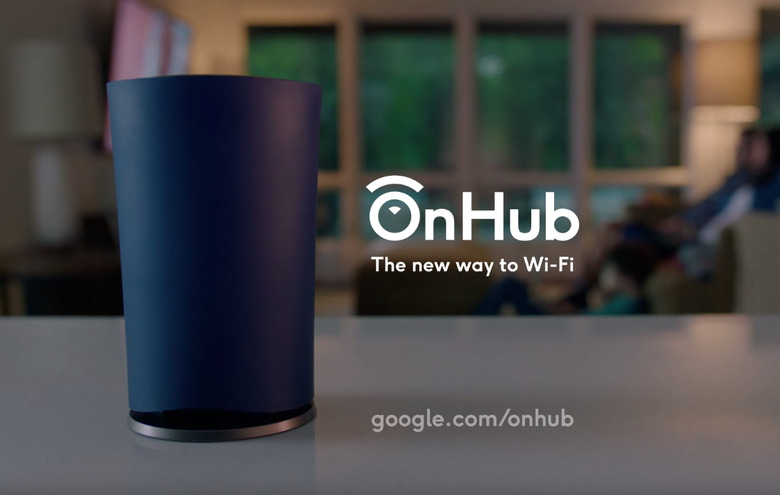The Clever Design Behind Google's OnHub Router
Google earlier this week unveiled a new Wi-Fi router dubbed OnHub that promises to solve all of your Wi-Fi related woes. While mobile technology has advanced by leaps and bounds in recent years, the routers we use today — and their associated problems — haven't really made similar advancements.
So in comes OnHub which features a unique antenna design, smart software for improved performance, and just as important, an associated app which makes adjusting router settings much simpler than tinkering around with a confusing piece of hardware with blinking lights.
DON'T MISS: Samsung Galaxy Note 5 review
Aesthetically, the OnHub router features a sleek cylindrical design that's somewhat reminiscent of the Amazon Echo. Whereas most routers are clunky and rectangular devices that most people simply toss on the floor, Google's OnHub router sports a modern design that belongs more on a shelf or table — on full display — than on the floor. You can basically put the OnHub router anywhere and it won't look out of place.
The design Google chose here is no accident. Speaking to Wired, Google product manager Trond Wuellner explained that keeping OnHub out in the open and not buried on the floor has a tremendous impact on Wi-Fi performance.
Google doesn't want you to crawl behind your desk every time you need to get at your router. It wants the OnHub right in the center of everything. This itself is a boon to your connection; hiding your router behind closed doors or underneath your TV is horrible for your signal.
...
"We discovered that when you put a router on the floor," Wuellner says, "versus on the shelf, the one on the shelf performs twice as well as the one on the floor." Wuellner's team also discovered that making it a tall cylinder made users less likely to stack things on top of it, which also destroys signal.
Indeed, keeping one's router on the ground, buried underneath piles of junk, or even tucked away in some far off corner of a room can really diminish an otherwise strong Wi-Fi connection. The OnHub design cleverly addresses such limitations.
Now will the OnHub be a huge hit? It's hard to say. The device is already sold out on the Google Store but it's hard to weigh the significance of this fact without knowing how large the initial supply was.
As a point of interest, Marco Arment yesterday expressed a bit of skepticism that the OnHub will be a runaway success, noting that "most of the home-router market just uses an integrated modem-router box provided by their ISP."
A fair point, but perhaps the improved performance and usability promised by Google's OnHub router is just the push people need to buy a pricier router on their own.
